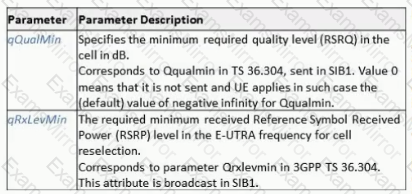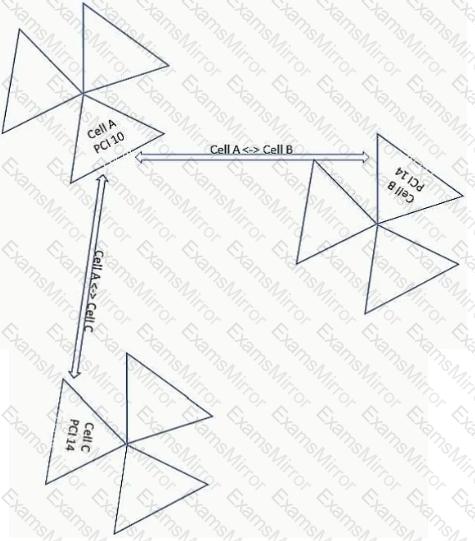Big Halloween Sale Limited Time 70% Discount Offer - Ends in 0d 00h 00m 00s - Coupon code = simple70
Pass the Ericsson Certified Associate ECP-383 Questions and answers with ExamsMirror
Exam ECP-383 Premium Access
View all detail and faqs for the ECP-383 exam
416 Students Passed
97% Average Score
98% Same Questions
Review the exhibit.

An operator's LTE single layer network has a cell not carrying enough traffic. To increase the traffic carried by the cell, the operator decides to modify the Idle mode behavior of the cell. Values for the qRxLevMin and qQuaimin parameters are currently set to -120 dBm and -12 dB.
Referring to the exhibit, which two configurations would be used to potentially increase the traffic carried by this cell? (Choose two.)
What is the recommended setting for the primaryCpichPower parameter according to Ericsson NDO guidelines?
How would the highest theoretical UL throughput in a WCDMA network that supports HSPA be achieved?
Review the exhibit.

Cell A has neighbor relations with cells B and C which share the same frequency and PCI. Cells B and C do not share any overlapping area.
Referring to the exhibit which statement is correct?
What is a benefit of soft handover?
What are two correct characteristics of TDD and FDD LTE systems? (Choose two.)
Which two statements correctly describe Single Carrier Frequency Division Multiple Access (SC-FDMA) as used in LTE systems using uplink SIMO? (Choose two.)
Which two statements are true about the Antenna Integrated Radio (AIR)? (Choose two.)
A user is participating in an IR.92 compliant VoLTE call.
What is the Quality of Service Class Indicator (QCI) of the bearer that carries SIP signaling?
Caller A is on a VoLTE call with Caller B. Suddenly Caller A is no longer able to hear Caller B but Caller B can hear Caller A.
Which two call legs and directions should be analyzed first in this scenario? (Choose two.)
TOP CODES
Top selling exam codes in the certification world, popular, in demand and updated to help you pass on the first try.
